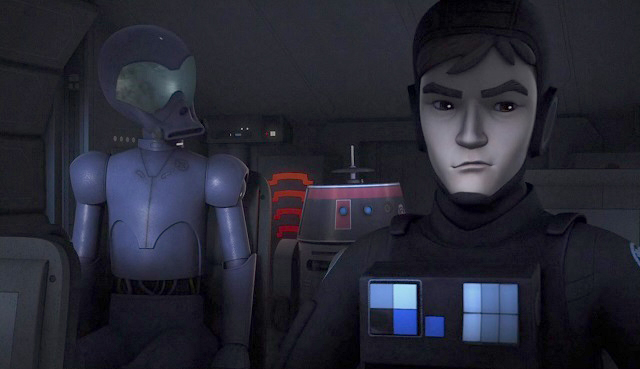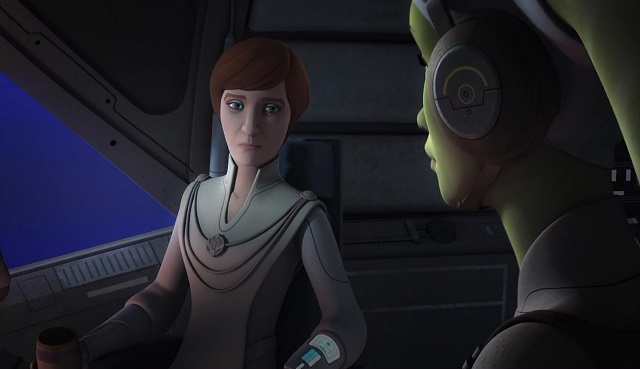
Mike: So I thought this episode was fun enough, but here’s a question that’s been in the back of my mind lately: is Star Wars Rebels serving its supporting characters adequately? I love the basic premise of AP-5 as a counterpart to Chopper, but we’re barely seen him this season—have they developed him enough in his two or three appearances to earn a POV story like this? Agent Kallus is the most prominent character without a Spectre designation, and even he never got to shoulder an entire episode himself until just a couple weeks ago, despite his having one of the most dramatic and consequential recent character arcs. Are they doing justice to these secondary players (hey, remember Ketsu?) or are we only seeing the Cliff’s Notes of their stories?
Ben: Short answer, no. Not nearly. The Rebels writers are still falling into much the same trap that they did during The Clone Wars, where they introduce side characters and then do nothing with them until it’s convenient to bring them back up later on. TCW could get away with it to some degree due to its less-serialized style, where people like Cad Bane and Barriss Offee could pop in and out of the overall narrative without too much of a disconnect. This approach had its own pros and cons, as any fan of Barriss will tell you. In Rebels, though…
Rebels’ storytelling is a much tighter, more straightforward narrative that’s driven by the actions of its central characters. The pacing is usually quick, almost too quick, driving events forward, where major plots are brought up and then resolved very quickly thereafter (for the most part; usually the villains work much more slowly than our heroes). This irreversible drive forward gets to the point where a lot of the side plots and characters don’t get the development that they really need. Read More
 (Note: This review is attempting to be spoiler-light – it’ll describe the main characters and that’s essentially it.)
(Note: This review is attempting to be spoiler-light – it’ll describe the main characters and that’s essentially it.)


